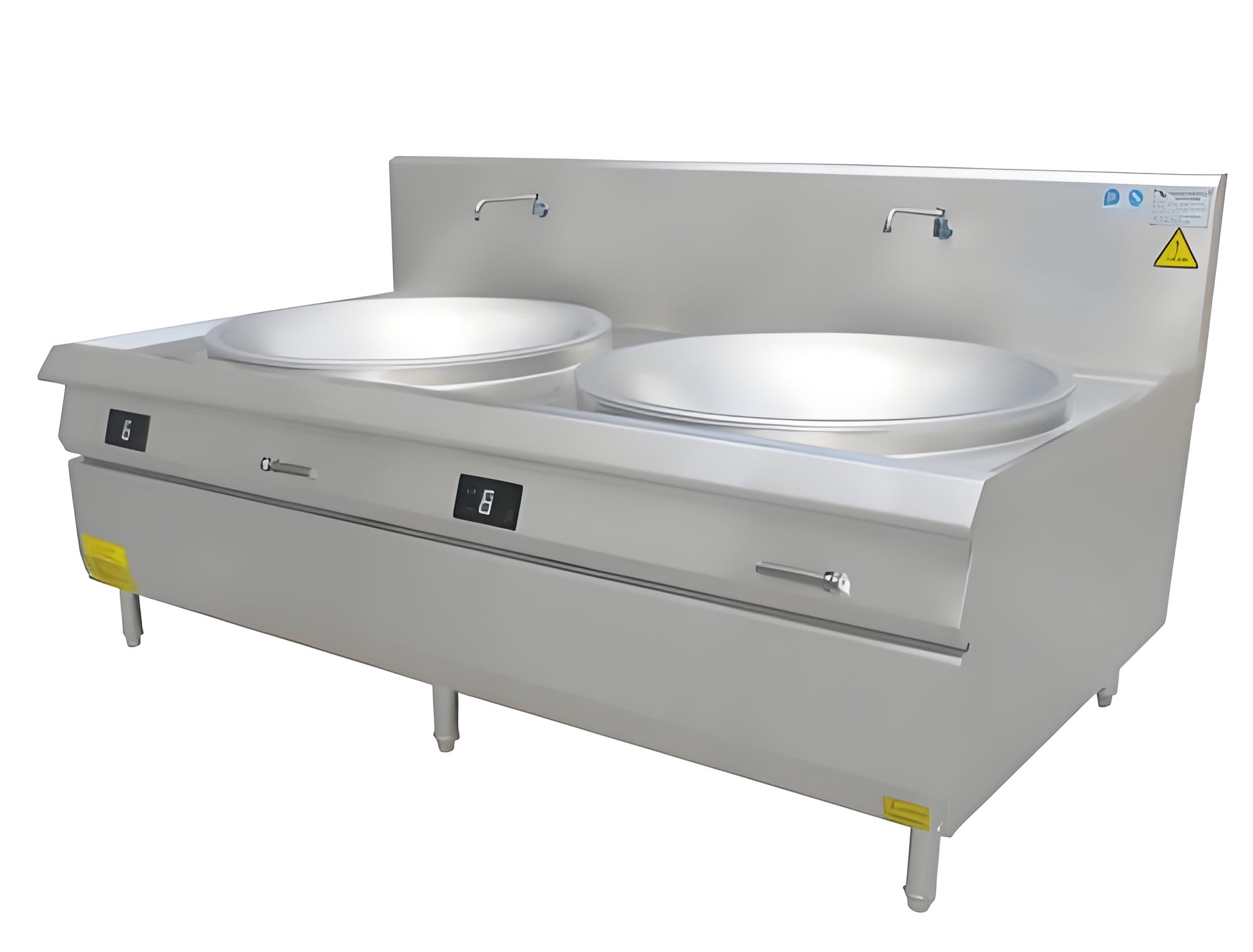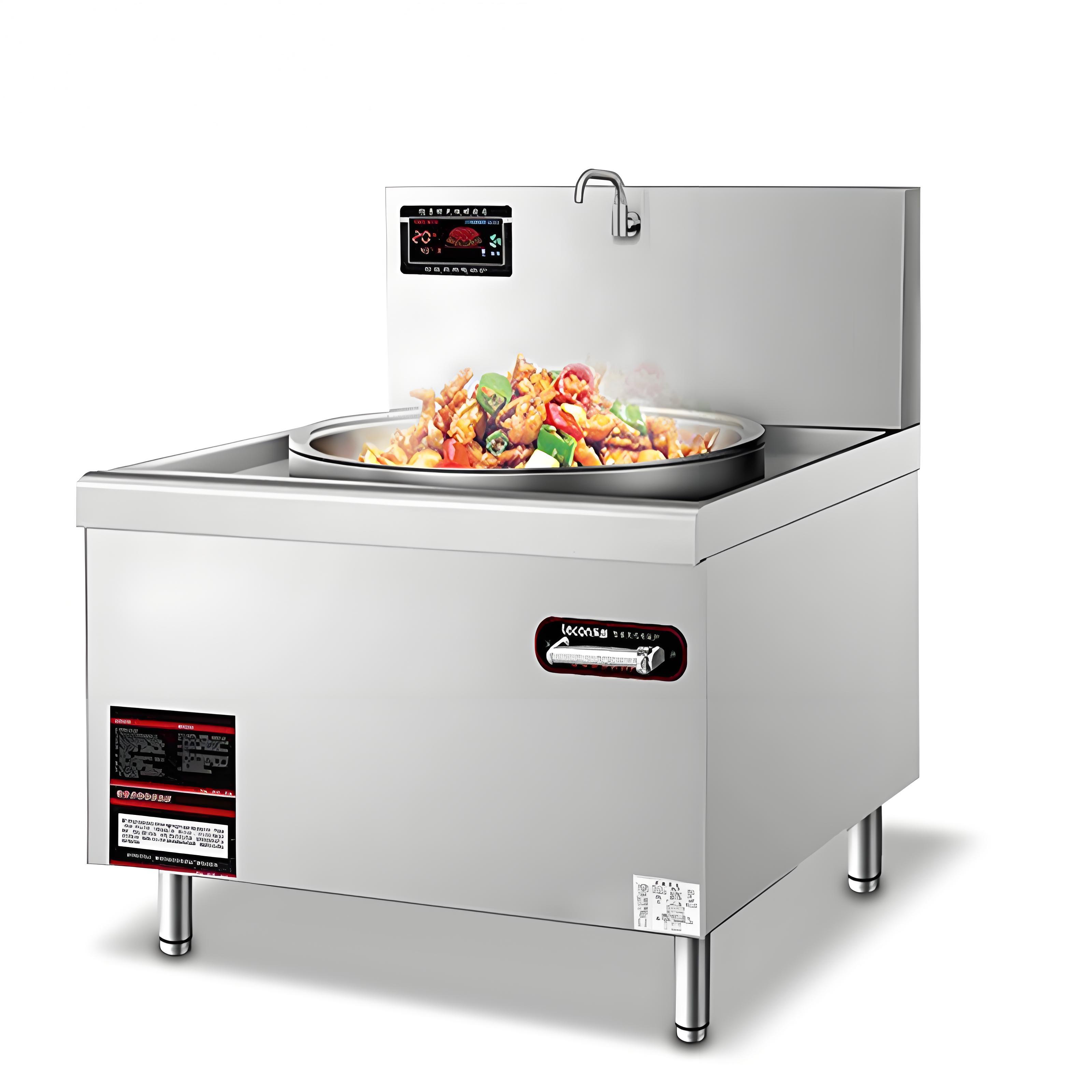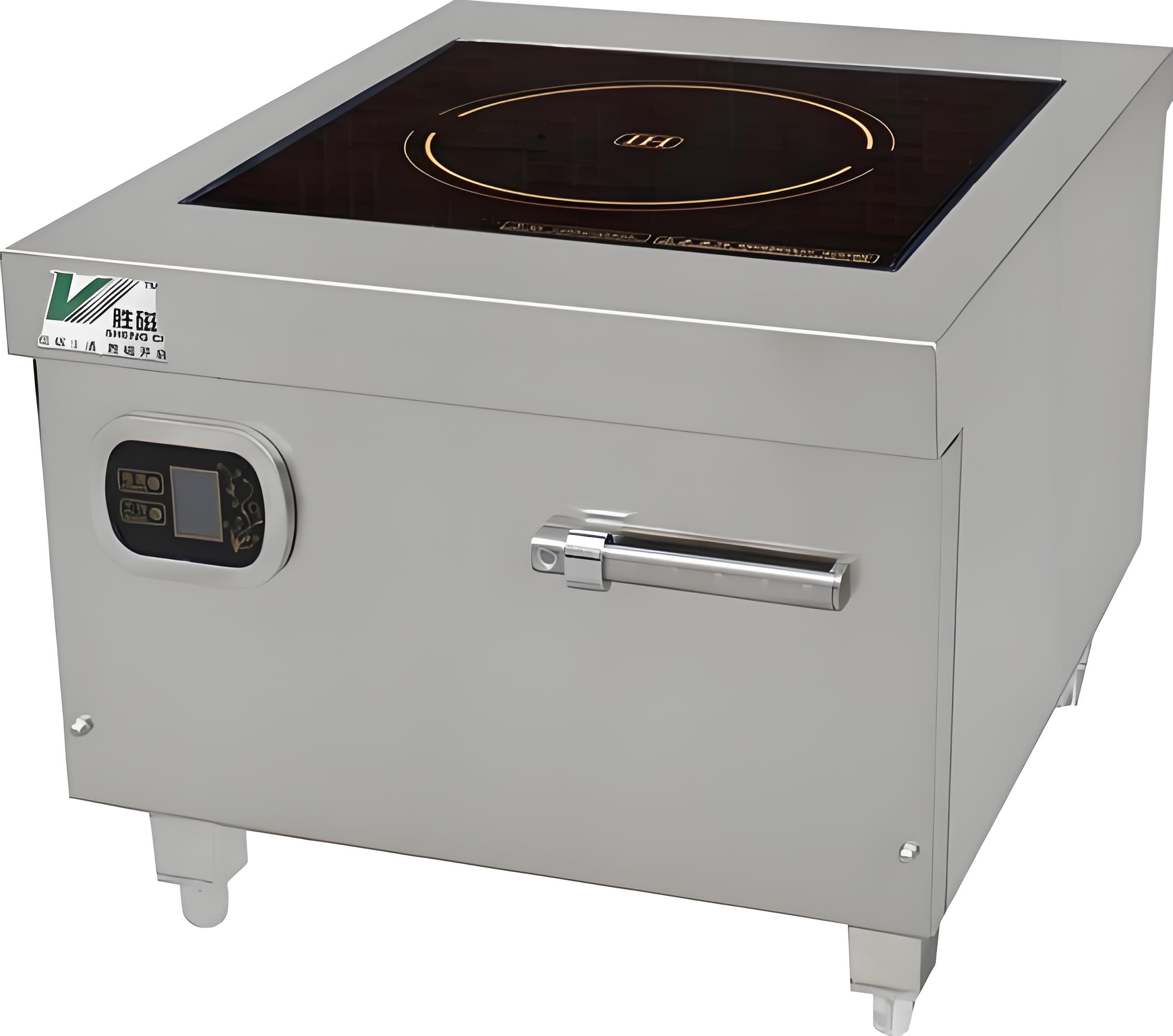As someone who’s spent over a decade consulting for restaurants and testing kitchen equipment, I’ve seen commercial induction cookers transform countless kitchens. When I hear the question, “Is a commercial induction cooker suitable for cooking noodles?” I know it’s coming from someone—likely a restaurant owner, chef, or caterer—wondering if this high-tech equipment can handle the demands of boiling noodles efficiently and consistently. The short answer is yes, but there’s a lot to unpack to ensure you’re using it effectively. In this article, I’ll dive into why commercial induction cookers are a great choice for noodle cooking, share practical tips from my experience, highlight potential challenges, and offer guidance to help you make the most of this technology in a bustling kitchen environment.
Why Consider a Commercial Induction Cooker for Noodles?
Cooking noodles, whether for a ramen shop, pasta restaurant, or catering service, requires consistent boiling water, fast heat-up times, and precise temperature control. Commercial induction cookers excel in these areas, making them a popular choice in professional kitchens. Unlike gas stoves, which rely on open flames, or traditional electric stoves, which heat slowly, induction cookers use electromagnetic fields to directly heat cookware, offering speed, efficiency, and safety.
I first saw induction cookers in action at a busy noodle shop in 2012. The chef was churning out bowls of udon at lightning speed, and the induction unit kept the water at a rolling boil without breaking a sweat. Since then, I’ve recommended induction for noodle-heavy kitchens because it streamlines operations and cuts energy costs. Let’s explore why it’s a good fit and how to use it effectively.

Advantages of Using Commercial Induction Cookers for Noodles
1. Lightning-Fast Heat-Up Times
Noodles need a vigorous rolling boil to cook evenly and achieve the right texture, especially for fresh or thick varieties like ramen or tagliatelle. Commercial induction cookers, typically rated at 3.5 kW to 5 kW, can bring a pot of water to a boil in half the time of gas or electric stoves. For example, a 5 kW induction unit can boil 5 liters of water in about 4-5 minutes, compared to 8-10 minutes on a gas burner.
I worked with a ramen restaurant in 2019 that switched from gas to induction. They shaved minutes off each batch of noodles, serving customers faster during peak hours. This speed is critical in high-volume settings where every second counts.
2. Precise Temperature Control
Induction cookers offer digital controls with precise power settings, often ranging from 100 W to 5 kW in increments of 100-200 W. This allows you to maintain a steady boil or adjust to a simmer for delicate noodles like soba or rice vermicelli. Gas burners, by contrast, are harder to fine-tune, and fluctuations can overcook or undercook noodles.
I recall a catering client who struggled with inconsistent soba texture using gas. After switching to a 3.5 kW induction cooker with preset power levels, they nailed the perfect al dente bite every time. The ability to dial in exact settings is a lifesaver for specialty noodles.
3. Energy Efficiency
Induction cookers transfer up to 90% of energy directly to the cookware, compared to 40-50% for gas or electric stoves. This efficiency translates to lower utility bills, especially in noodle shops where water is boiled all day. Plus, they generate less ambient heat, keeping your kitchen cooler and reducing air conditioning costs.
A dim sum restaurant I consulted for in 2021 replaced their gas burners with induction units. Their monthly electricity bill dropped by 20%, and the staff appreciated the cooler workspace—a win-win for noodle-heavy operations.

4. Safety and Cleanliness
Induction cookers only heat magnetic cookware (like stainless steel or cast iron), so the surface stays relatively cool, reducing burn risks. They also lack open flames, minimizing fire hazards in busy kitchens. Spills don’t burn onto the surface, making cleanup a breeze.
I saw this benefit firsthand at a pasta restaurant in 2023. A clumsy line cook spilled boiling water on an induction cooker, and the surface was cool enough to wipe down immediately. With gas, that would’ve been a sticky, hazardous mess.
5. Durability for Commercial Use
Commercial induction cookers are built to withstand 12-16 hours of daily use, with robust components like tempered glass-ceramic surfaces and heavy-duty electronics. Brands like Vollrath, Max Burton, and Hatco offer models designed for high-throughput kitchens, perfect for noodle production.
Challenges and Considerations
While induction cookers are excellent for cooking noodles, they’re not without quirks. Here’s what I’ve learned to watch out for:
1. Cookware Compatibility
Induction requires ferromagnetic cookware (test with a magnet—if it sticks, it works). Non-magnetic materials like aluminum or copper won’t heat up. Many kitchens already use stainless steel pots for noodles, but if you’re using aluminum, you’ll need to invest in compatible pots, which can cost $50-$200 each.
A client running a pho shop learned this the hard way in 2020. Their aluminum stockpots were useless on the new induction units, forcing a costly upgrade. Always check your cookware before buying.
2. Initial Cost
Commercial induction cookers range from $500 to $3,000 per unit, pricier than gas burners ($200-$1,000). However, energy savings and durability often offset the cost within 1-2 years. For small startups, the upfront investment can sting.
I advised a noodle cart owner in 2022 to start with a single 3.5 kW unit rather than a full kitchen refit. They recouped the cost in 18 months through lower energy bills and faster service.

3. Power Requirements
High-powered induction cookers (3.5 kW and up) require dedicated electrical circuits (220-240V, 15-30 amps). Older kitchens may need electrical upgrades, costing $1,000-$5,000. Lower-powered units (1.8 kW) can run on standard 120V outlets but are slower for large batches.
A ramen shop I worked with in 2024 had to delay their induction rollout due to outdated wiring. We planned a phased upgrade to avoid downtime, starting with one unit.
4. Learning Curve
Induction cookers have a slight learning curve, especially for chefs used to gas. Power settings (e.g., 1800 W vs. 3500 W) don’t directly translate to “low” or “high” flames, so it takes practice to master boiling intensity. Overcooking noodles is a risk if settings are too high.
I trained a kitchen staff in 2023 to use presets for different noodle types (e.g., 3000 W for ramen, 2000 W for soba). After a week, they were confident and consistent.
5. Noise and Vibration
Some induction units produce a low hum or fan noise, and high-power settings can cause cookware to vibrate slightly. This is rarely a dealbreaker but can annoy staff in quiet kitchens. Heavy, flat-bottomed pots minimize vibration.
How to Cook Noodles on a Commercial Induction Cooker
Based on my experience, here’s a step-by-step guide to cooking noodles perfectly:
Choose the Right Pot: Use a stainless steel or cast iron stockpot with a flat bottom, 8-20 liters depending on batch size. Ensure it’s induction-compatible.
Fill with Water: Use 4-5 liters of water per 500g of noodles for a rolling boil. Add a pinch of salt for pasta or rice noodles.
Set Power Level: Start at 3000-3500 W to boil quickly. Once boiling, reduce to 2000-2500 W to maintain a steady boil. For delicate noodles, use 1500-1800 W.
Add Noodles: Stir gently to prevent sticking. Use a noodle basket for easy removal, especially in high-volume settings.
Monitor Cooking Time: Follow package instructions (e.g., 3-5 minutes for ramen, 8-10 minutes for spaghetti). Taste-test for doneness.
Drain and Rinse: Lift the basket or use a colander. Rinse fresh noodles (like ramen) in cold water to stop cooking and improve texture.
Clean Up: Wipe the induction surface with a damp cloth after cooling. Avoid abrasive cleaners to protect the glass-ceramic.
I trained a noodle shop staff to use this method in 2021. They went from inconsistent batches to perfectly cooked ramen in under 5 minutes, boosting customer satisfaction.

Tips for Optimizing Noodle Cooking
Here are some tricks I’ve picked up to make induction cooking even better for noodles:
Use Presets: Program power levels for specific noodle types (e.g., 2500 W for udon, 1800 W for soba) to ensure consistency across shifts.
Batch Cook Efficiently: Use multiple noodle baskets in one pot to cook several portions simultaneously, ideal for peak hours.
Keep Water Hot: Maintain a simmering pot (1000-1500 W) during lulls to restart boiling quickly. This saves time vs. starting from cold.
Invest in Quality Cookware: Heavy-bottomed pots distribute heat evenly and reduce vibration. Brands like Vollrath or All-Clad are worth the splurge.
Monitor Water Quality: Hard water can leave mineral deposits on pots, affecting induction efficiency. Use filtered water if possible.
Comparing Induction to Other Methods for Noodles
To help you decide if induction is right, here’s a comparison based on my observations:
| Method | Boil Time (5L) | Pros | Cons |
|---|---|---|---|
| Induction Cooker | 4-5 min | Fast, precise, energy-efficient, safe | High initial cost, needs compatible cookware |
| Gas Burner | 8-10 min | Low cost, familiar to chefs | Less precise, higher energy waste, fire risk |
| Electric Stove | 10-12 min | Affordable, no open flame | Slow, less efficient, hard to control |
| Dedicated Noodle Boiler | 3-4 min | Ultra-fast, high-volume capacity | Expensive ($5,000+), single-purpose |
Induction strikes a balance between speed, control, and efficiency, making it ideal for most noodle-focused kitchens.
Real-Life Case: A Noodle Shop’s Induction Success
In 2022, I helped a small ramen shop transition to induction cookers. They were using gas burners, which were slow and heated the tiny kitchen unbearably. We installed two 3.5 kW Vollrath units ($1,200 each) and upgraded their stainless steel pots ($150 each). After training the staff to use 3000 W for boiling and 2000 W for cooking, they cut noodle prep time from 8 minutes to 5 minutes per batch. Energy costs dropped by 15%, and the cooler kitchen improved staff morale. Customers noticed the faster service, and the shop’s Yelp reviews glowed. The owner recouped the investment in under a year.
This experience showed me how induction can transform a noodle business, especially in small, high-pressure kitchens.

Is It Worth It for Your Kitchen?
Commercial induction cookers are highly suitable for cooking noodles, offering speed, precision, and efficiency that gas or electric stoves can’t match. They’re ideal for:
High-volume noodle shops (ramen, udon, pho) needing fast, consistent boiling.
Catering services cooking pasta or rice noodles for events.
Small kitchens where safety and cleanliness are priorities.
Eco-conscious businesses aiming to reduce energy waste.
However, consider your budget, electrical setup, and cookware before committing. If you’re a startup with limited funds, a single unit can be a cost-effective start. For larger operations, investing in multiple units or a dedicated noodle boiler might make sense.
Final Thoughts
Cooking noodles on a commercial induction cooker is not only feasible but often superior to traditional methods, thanks to its speed, control, and efficiency. Whether you’re dishing out bowls of ramen or plates of fettuccine, induction can streamline your workflow and elevate quality. From choosing the right power settings to optimizing your setup, the tips I’ve shared come from years of helping kitchens succeed. If you’re wondering whether induction is right for your noodle operation or need advice on specific models, drop a comment—I’m happy to share more insights!

Related Questions and Answers
1. Can I cook all types of noodles on an induction cooker?
Yes, from ramen to spaghetti to rice noodles. Use higher power (2500-3500 W) for thick noodles like udon and lower (1500-2000 W) for delicate ones like soba.
2. Why does my induction cooker take longer to boil water than expected?
Check if your cookware is induction-compatible and flat-bottomed. Low power settings or insufficient voltage (e.g., 120V vs. 240V) can also slow boiling. Use 3000 W or higher for faster results.
3. Is it cheaper to run an induction cooker than a gas burner for noodles?
Yes, induction is up to 90% efficient vs. 40-50% for gas, saving 20-30% on energy costs. However, initial equipment costs are higher.
4. How do I prevent noodles from sticking together on an induction cooker?
Use plenty of water (4-5L per 500g), stir after adding noodles, and consider a drop of oil for sticky types like rice noodles. A noodle basket helps separate portions.
5. Can I use an induction cooker for other dishes besides noodles?
Absolutely! Induction is versatile for stir-frying, soups, sauces, and more, as long as you use compatible cookware. It’s a great all-purpose tool for commercial kitchens.




